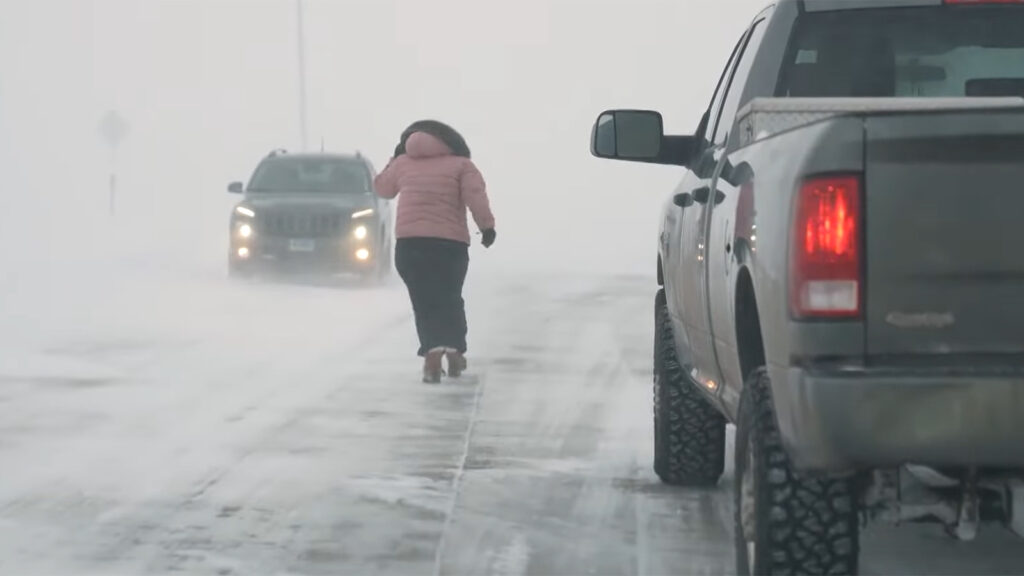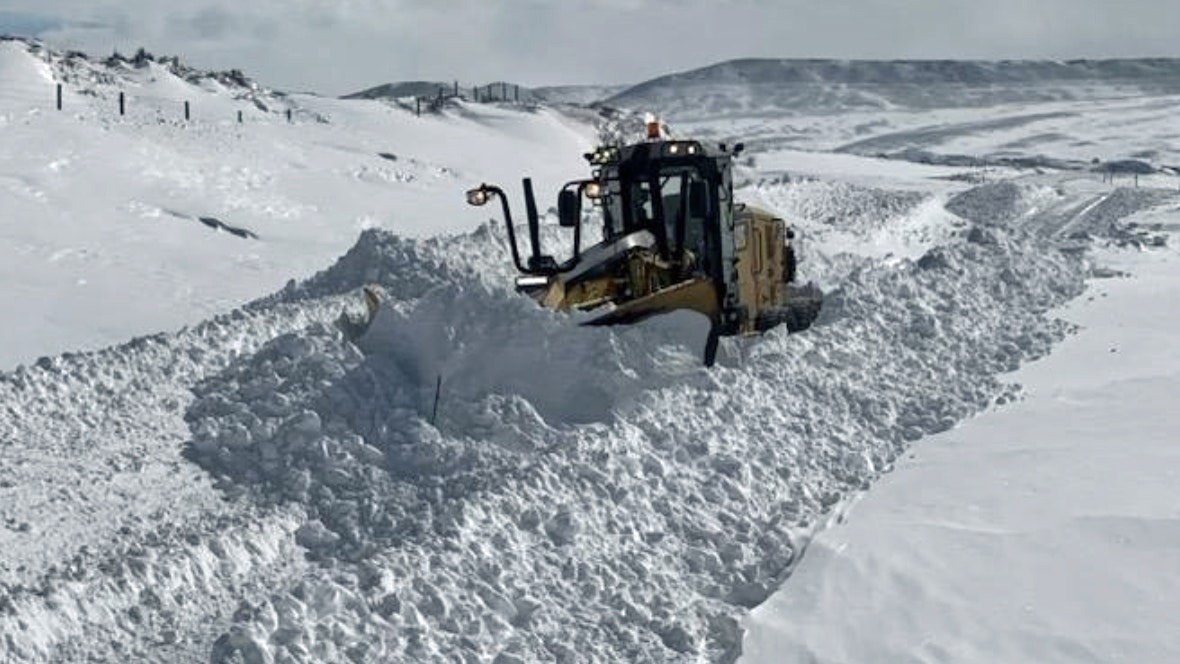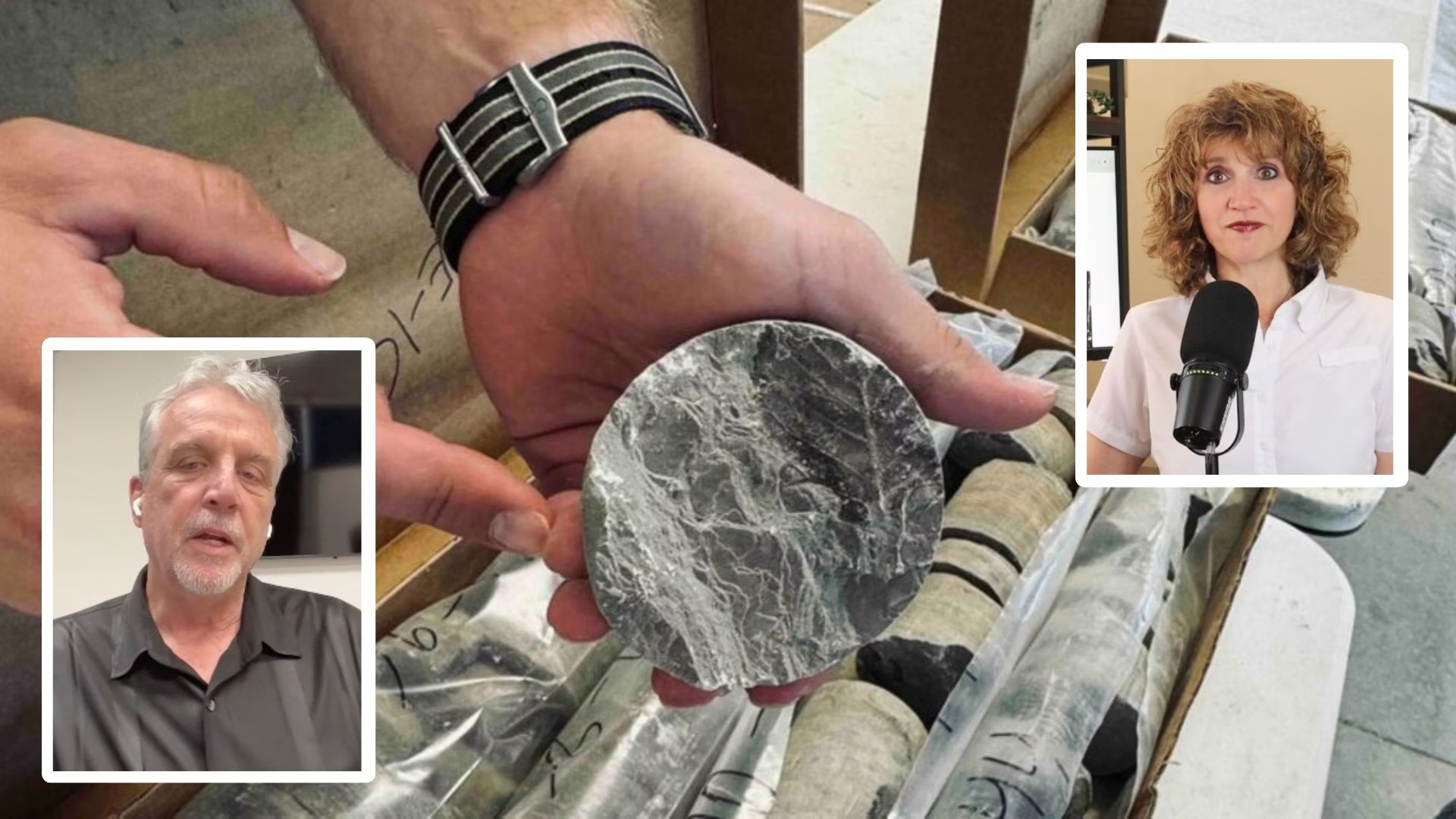An intense snowstorm that dropped as much as 4 feet of snow in some parts of Carbon County proved too much for the Wyoming Department of Transportation’s behemoth snowplows.
While plowing the roads and highways around the county along the southern Wyoming corridor, a WYDOT snowplow became stuck.
Then another.
Then a third.
And a fourth.
Then an agency supervisor who went out to try and free the plows also got stuck.
And even a wrecker large enough to pull out a snowplow got stuck responding to help.
Saying the troubles responding to the storm made for a long 18-hour day, the plow operators eventually “made it back to town,” said plow driver JJ Rogers in a Thursday Facebook post detailing the ordeal.
“We hare [sic] at WYDOT are going our best to get our roads cleared and safe for travel again,” he said in the post, adding that he and three other plow operators “were stuck out there. Our area supervisor tried to get to us and got stuck himself. Then the wrecker that was called to pull us out got stuck.
“It took a toll on us all. 18 hours later we made it back to town.”
He adds a caveat that people should “stay inside where you’re safe and warm” and that WYDOT “will get these roads open as soon as possible.”
Winds Made It Worse
The brunt of the storm around Carbon County dropped 48 inches of snow at Battle Lake while the campgrounds along Jack Creek and Sugar Loaf recorded 42 inches each. The city of Rawlins saw upward of 2 feet of snow.
But what really exacerbated the conditions were high winds that caused huge snowdrifts across roads and highways, said Andrea Staley, spokesperson for the Wyoming Department of Transportation’s District 1, which includes Carbon, Albany and Laramie counties.
“I do know there were a lot of big drifts that happened yesterday, causing a lot of stuck plows, stuck wreckers,” Staley said. “We had a big night last night of getting to our crews, and also helping out the public who get stuck out there.”
Staley said she has a lot of respect for Rogers and the band of WYDOT plow drivers.
“They’re going out there when nobody wants to,” she said. “When you can’t see the road, nobody wants to go out there, and they do.”


Does God Hate Carbon County?
After this week’s winter storm brought 72 hours of hell across Wyoming while blowing snow nearly sideways at more than 60 mph, this is the question many in Rawlins, Saratoga and other Carbon County communities are asking themselves.
“Well, I can see how it may feel like you’re getting picked on through there,” said Cowboy State Daily Meteorologist Don Day. “And actually, you kind of are. If you want to get theological about it, I guess you could see it that way. There’s a long history of God hating that place.”
That said, it’s more accurate to say the region along southwestern Wyoming isn’t so much hated by God as it’s in the crosshairs of Mother Nature, Day said.
“This whole thing about the weather and Interstate 80 and places like Rawlins along there is that’s where they decided to put the railroad and the interstate,” he said.
While that makes Rawlins an important dot on the interstate commerce map for rail and semitrailers, it also brings them all together in a perfect storm for being hit by, well, perfect storms, he said.

Location, Location, Location
If it seems Rawlins has been fighting a losing battle trying to keep up with clearing snow this winter, that’s because it has, Day said. Since November, large snow events have happened enough to stay ahead of local efforts to clear roads and move excess snow.
Carbon County is a unique geographic area of the Rocky Mountain West where there’s a significant break in the mountains between Canada and New Mexico, he said. That means Mother Nature sees it as a good place to dump snow in the wintertime.
“From a weather and climate standpoint, if you look at the entire Rocky Mountain region, it’s a very unique situation,” Day said. “It’s the largest break in the Rocky Mountain chain, the only place where the mountains are broken up to where there’s a gap. The cards are stacked against them there, immediately.”
What that means is that area becomes “the path of least resistance” when the snow and winds start blowing. It also has made Carbon County residents some of the hardiest folks in Wyoming.
“They do put up with a lot there,” Day said. “The people in Carbon County are 10 times tougher than anybody else.”
At Least There’s Flooding To Look Forward To
The last time Rawlins and the surrounding area saw a similar heavy snow winter was in 2010-11, Day said, adding there are boom-bust cycles for weather as well as oil, gas and coal.
“We saw a similar winter situation in 2010-11,” he said. “It targeted that area big. The spring of 2011, there also was flooding on the North Platte, big flooding on the Wind River.”
Does that mean after weathering this winter, Carbon County residents can look forward to potentially being flooded out come spring?
Maybe, Day said.
“I think that’s on the table. What I’m seeing is more storms into March and April, and that’s where the water is,” he said. “That’s a wildcard that’s there. It’s feast or famine in the Western United States in terms of precipitation: drought-flood, drought-flood, drought-flood.”
If no more snow falls for the rest of the season, there still would be a normal runoff, Day said. That means with three more months of some of the heaviest snows ahead, he expects that to be much higher than normal.
Don’t Blame God, Blame Day
If you don’t want to blame God or Mother Nature for putting Carbon County in a winter hot zone, Day said that as a meteorologist, he’s become accustomed to taking the heat.
“Yup, it’s your fault regardless when you become a meteorologist – you will take the blame and your name will be cursed,” Day said. “But that goes with the territory.”
And if it helps to hear it from someone, he said that “absolutely, I apologize.”





